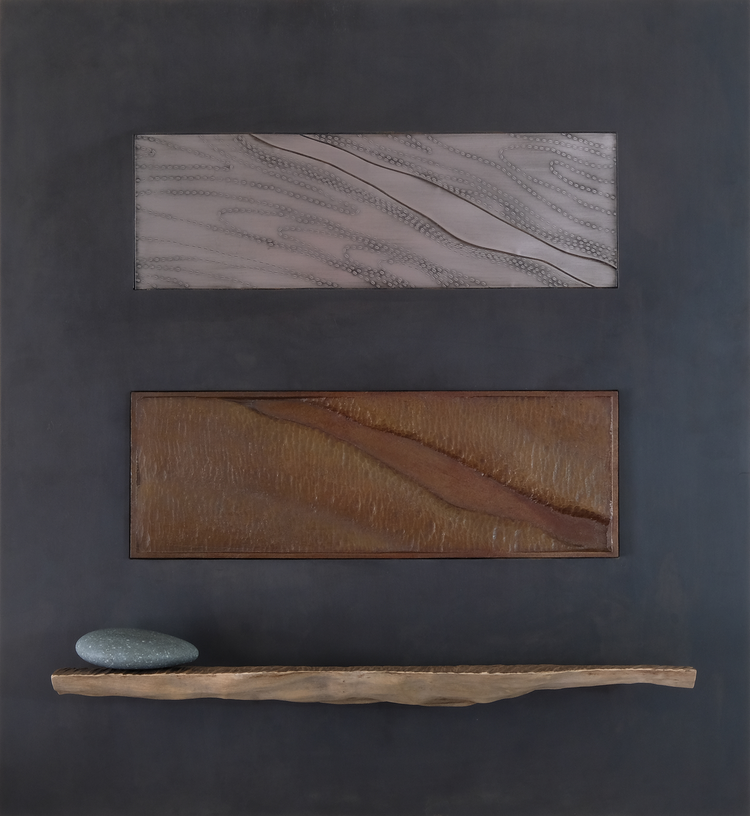When I begin a project things might look a bit different than your typical wood shop. You see I haven't purchased lumber at a regular lumber yard since 1994. That was the year I started milling my own lumber from urban trees. For this project I pulled out these four beautiful 2 1/4" thick slabs of monterey cypress, averaging 20" wide and six feet long. I will need about sixteen 4" x 28" pieces, preferably free of knots and with straight grain. Barring the free of knots criteria, any knots will need to be fully contained and the only place to do that in this project will be near one end of the boards. The desire for knot free boards is because I will be gluing these boards into a 30" x 28" x 4" leg which will be carved. Knots can can chip a chisel edge and the grain near a knot can be rowey, a term meaning unpredictable grain direction, and it can make the wood very difficult to carve without getting tear outs and splits.
I'm sure some will flinch at the idea of cutting such magnificent slabs of wood into such small piece,s but when all your wood comes into the shop in this form and if you build things that need smaller pieces that's what has to be done. As luck would have it I was able to get the pieces I needed out of three of the four slabs leaving one to possibly become the seat of a blanket chest. Those of you that are quick with numbers will have already figured out that I used about 67 board feet worth of rough slabs to net the 23 board feet I needed.
There is an old axiom in milling lumber that says that half the tree stays in the forest and half goes to the mill. Half of a log sent to a mill is sold as lumber and half is made into scrap. Half of a board sold as lumber is made into furniture and half is made into scrap. In case you aren't good with fractions that works out to 1/4 of a log being made into furniture. I convert more of a log into slabs than a lumber mill but on the other end I generate more scrap when using those slabs to build furniture. In the end try as I might to do better than that old axiom I average about 1/4 of a log being made into furniture


